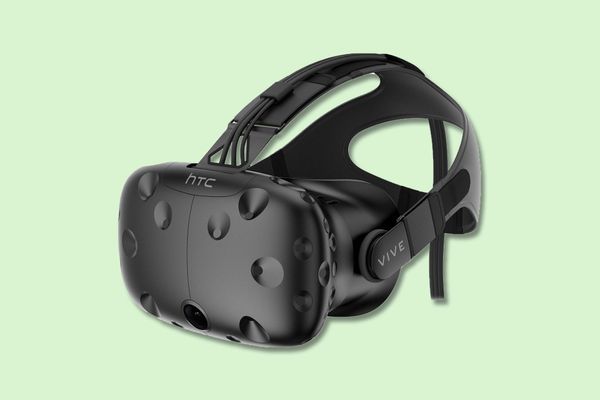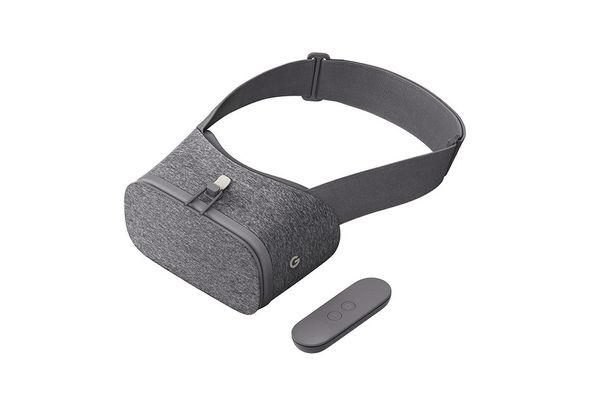While this year was a big one for virtual reality, with four new major consumer headsets hitting the market — the HTC Vive, the Oculus Rift, the PlayStation VR headset, and Google’s Daydream View headset — the medium is still very much figuring itself out. Headsets are evolving, games and “experiences” are changing rapidly from what I saw in 2015, and VR is still waiting for its massive breakout hit, something that will convince the vast majority of gamers who remain on the fence to invest in VR. (Beginners to VR: Keep reading for a cheaper option.)
All that said, the HTC Vive currently represents the high watermark for virtual reality, and if you’re passionate about VR, it’s the headset to own. But it comes with some barriers to entry, so let’s go over them.
First off, the Vive remains an expensive proposition — especially if you don’t already have a pretty beefy desktop PC. The headset will run you $800, and you can expect to spend at least $700 on a pre-built PC capable of running games on it, with more robust PCs running more like $1,000. (You can also build your own PC, but the rise in demand for pre-built PCs ready for VR has created some bundles that are cheaper than buying individual parts yourself.) So you’re looking at an initial investment of at least $1,500.
Second, you’ll need a room that you can either keep relatively empty, or clear out easily. What makes the HTC Vive great is its “room-scale” VR, which means you can walk around while using it and your movement translates into the virtual world. (The Holodeck from Star Trek is a common reference point here.) To do this, you’ll need to set up two sensors in the corner of a room to detect where you are. Since you’ll be wearing a headset that blocks out the outside world, you can’t just set this up in your living room and hope to not bang your shins on the coffee table (or trip into your flat-screen TV). HTC provides a “chaperone” system, which will bring up blue lines in virtual reality if you stray past certain real-world boundaries you’ve set up, but if you’re living in a cramped 400-square-foot apartment, you may not be getting your money’s worth.
Finally, you’ll need a bit of patience. The Vive is a product meant for PCs, and that means you’ll need to keep your drivers up to date, think about replacing your video card every two years or so, and deal with the odd bug here and there. (If you’re not sure what a driver is or how to update one and you don’t want to learn, the PlayStation VR isn’t as high-powered but is much simpler and cheaper to set up, especially if you already have a PlayStation 4.)
But if you’re willing to make the leap, the HTC Vive has consistently been the best headset at delivering on the real promise of virtual reality: “presence,” or when a VR experience makes you feel like you are there. This is mainly because the Vive will track every move your head makes. Other headsets have issues with understanding if you move outside of certain areas, breaking the illusion when you suddenly get a warning that you’ve moved your head too far in a certain direction. But in the Vive, tilting your head and leaning over while peering around a corner translates perfectly. The same with crouching down to examine something up close, or the very instinctive urge to lean forward and over something you’re interested in. Thanks to this, you get fewer reminders that you’re wearing a very expensive scuba mask with tiny monitors in front of your eyeballs and more time just spent looking around or interacting with what’s in front of you.
In practice, this means the Vive will trick your autonomic nervous system like crazy. Looking over a tall ledge will make you take a step backward toward safety, you’ll step out of the way of things entering your personal space, or get that weird airy feeling around you when suddenly stepping into a large, open space. It can be too much at times (games with a lot of “jump scares” or sharp objects being held close to your eyes in virtual reality are, uh, intense), but this is why people who are passionate about virtual reality are so jazzed up about the medium — at its best it’s like watching a movie after a lifetime of only being able to see individual still frames.
The Oculus Rift has recently introduced an upgrade that allows it to do its own version of room-scale VR, and its recently released Touch controllers feel more natural than the wands you use with the HTC Rift — but getting all that together is more expensive than the Vive, and there aren’t many games for the Rift that are really built for room-scale VR right now. In six months the Rift may be a better choice, but right now the Vive is still the way to go. (Welcome to the world of being an early adopter!)
But, like I said, the Vive (and the Oculus Rift and, to a much lesser extent, the PlayStation VR) all require an investment of money, space, and time. Which is why if I wanted to buy something for someone who’s never tried VR (or I’d never tried it but was curious about VR myself), I’d get a Google Daydream View.
The Daydream is the cheapest major VR headset on the market at $79, but it’s also the best VR headset that uses your smartphone. It’s plush and comfortable, looking and feeling more like a favorite sweatshirt than the goofy cyberpunk aesthetic of most other VR headsets. It comes with a small wand controller (basically a version of the Nintendo Wii controller) to easily interact with the virtual world in front of you. It wirelessly connects to your phone, making getting started with it ridiculously simple. Google seems to be paying good money to developers to get a good selection of interesting games and apps on Daydream. And overall, it’s just a warm, welcoming way to experience VR.
There are two small downsides: Right now the Daydream only works with a few high-end Android phones, most notably the Google Pixel, but it’s an open platform for any phone that meets certain specs, which means more and more Android phones coming on the market will work with the Daydream (with the likely exception of Samsung, which has invested in its own headset, the Gear VR). And iPhone users will be shut out entirely, likely forever — Apple has quietly been recruiting engineers and filing patents for its own VR efforts, though nobody outside of Cupertino knows when and how that will translate into something for consumers.
But I’m headed back home for the holidays for a bit, and plan to take the Daydream and a Pixel with me just so I can watch my parents play around with them for a while. The semi-secret about VR is that one of its biggest delights is watching people experience virtual reality for the first time — and the Daydream is the perfect way to make that happen.
The Strategist is a new site designed to surface the most useful, expert recommendations for things to buy across the vast e-commerce landscape. Some of our latest conquests include the best notebook, black T-shirts, fashion-editor-approved jeans, toothbrush, and apartment décor. Note that all prices are subject to change.
If you buy something through our links, New York may earn an affiliate commission.







